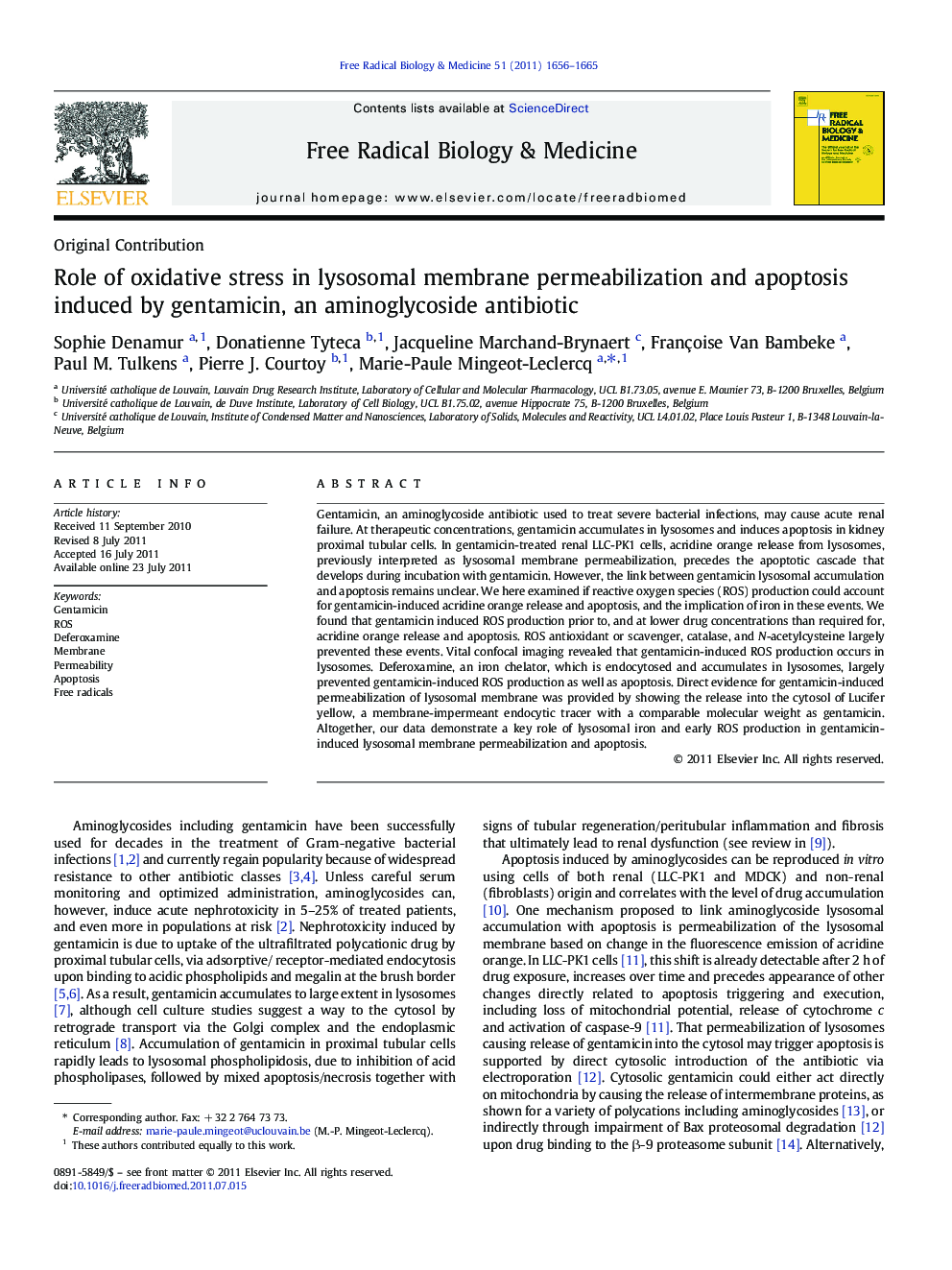| Article ID | Journal | Published Year | Pages | File Type |
|---|---|---|---|---|
| 10738470 | Free Radical Biology and Medicine | 2011 | 10 Pages |
Abstract
Gentamicin, an aminoglycoside antibiotic used to treat severe bacterial infections, may cause acute renal failure. At therapeutic concentrations, gentamicin accumulates in lysosomes and induces apoptosis in kidney proximal tubular cells. In gentamicin-treated renal LLC-PK1 cells, acridine orange release from lysosomes, previously interpreted as lysosomal membrane permeabilization, precedes the apoptotic cascade that develops during incubation with gentamicin. However, the link between gentamicin lysosomal accumulation and apoptosis remains unclear. We here examined if reactive oxygen species (ROS) production could account for gentamicin-induced acridine orange release and apoptosis, and the implication of iron in these events. We found that gentamicin induced ROS production prior to, and at lower drug concentrations than required for, acridine orange release and apoptosis. ROS antioxidant or scavenger, catalase, and N-acetylcysteine largely prevented these events. Vital confocal imaging revealed that gentamicin-induced ROS production occurs in lysosomes. Deferoxamine, an iron chelator, which is endocytosed and accumulates in lysosomes, largely prevented gentamicin-induced ROS production as well as apoptosis. Direct evidence for gentamicin-induced permeabilization of lysosomal membrane was provided by showing the release into the cytosol of Lucifer yellow, a membrane-impermeant endocytic tracer with a comparable molecular weight as gentamicin. Altogether, our data demonstrate a key role of lysosomal iron and early ROS production in gentamicin-induced lysosomal membrane permeabilization and apoptosis.
Related Topics
Life Sciences
Biochemistry, Genetics and Molecular Biology
Ageing
Authors
Sophie Denamur, Donatienne Tyteca, Jacqueline Marchand-Brynaert, Françoise Van Bambeke, Paul M. Tulkens, Pierre J. Courtoy, Marie-Paule Mingeot-Leclercq,
